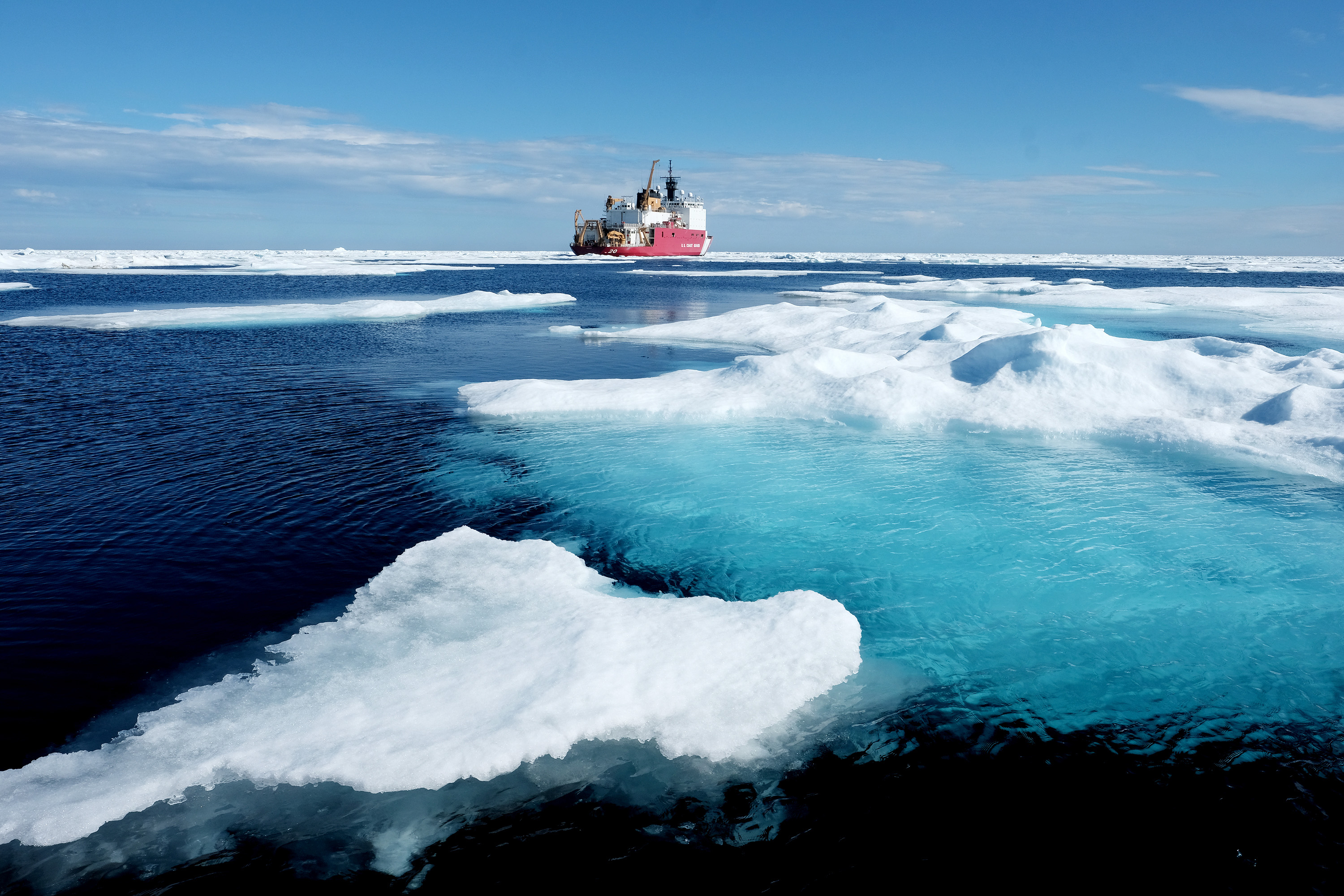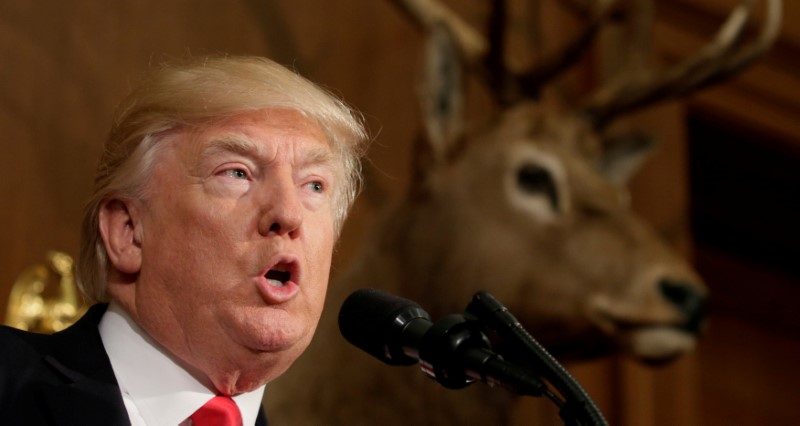What’s the one U.N. treaty Trump should love?

As evidenced by President Donald Trump’s speech at the U.N. General Assembly Tuesday, the White House clearly has no love for multilateral agreements. Defying international outrage, he has pulled out of the Paris climate change accords, demanded renegotiation of the North American Free Trade Agreement, and made threatening noises about a host of other international agreements. Given all this, what chance is there that the United States might finally join the primary international treaty governing the oceans?
It’s slim – maybe even remote. But there are a couple of very Trumpian reasons that the president’s team should give the treaty a look.
Agreed to in the early 1980s, the U.N. Convention on the Law of the Sea came into force in 1994 after parts of the treaty were renegotiated to meet the concerns of wealthy states. Most of the world – and almost all major coastal states – have now joined it. China and Japan ratified it in 1996, Russia the next year, and almost all of Europe had signed on by the end of the 1990s. Canada, which has a complex set of fishing and Arctic concerns, waited until 2003 before getting on board.
But in the United States, the treaty has now been languishing in the Senate for more than two decades. It has the support of the military brass and most living secretaries of state and defense. George W. Bush called for ratification in 2004 and again in 2007. The Barack Obama administration made its own push in 2012. John Kerry, then-chair of the Senate Foreign Relations Committee, convened hearings in which four serving admirals and two generals testified in favor of ratification – Kerry dubbed it the “24 star” hearing. But 34 Senate Republicans still balked, leaving the treaty without the two-thirds support needed for ratification.

Enter the Trump administration. As candidate and president, Trump has made reviving mining jobs in the United States a priority. He has dismantled regulations that he argued were harming the industry and has boasted about the new coal jobs he has already created. Fact-checkers dispute his numbers, and economists point out that the traditional coal-mining sector is small and likely to shrink further as cleaner alternative energies gain ground.
But one kind of mining is on the cutting edge and could be a source of future employment and revenue: seabed mining.
More than a century ago, researchers aboard the British navy ship Challenger discovered curious nodules on the ocean floor. Analysis revealed that they contained valuable metals, including manganese and iron. Other seabed features contain large deposits of copper, zinc, gold, and silver. In the 1970s, visions of vast wealth on the seabed helped push more than 100 countries to begin negotiating the oceans treaty in first place. But, until recently, accessing those riches has been prohibitively expensive.
New breakthroughs suggest that the industry will soon become viable. A Canadian company, Nautilus Minerals, has developed machinery capable of operating at great depths. A Korean conglomerate is also making strides. Engineers and scientists have made steps toward balancing economic and environmental concerns. But because the United States doesn’t participate in the convention’s system for divvying up portions of the deep seabed, its companies are having trouble getting in on the action.
The United States has its own system for granting seabed mining licenses, but it’s not recognized internationally, and companies don’t trust it to provide secure legal rights. Lockheed Martin, a U.S. company, has been forced to work on seabed issues through a British subsidiary. Meanwhile, the international body tasked with managing the seabed is proceeding with important mining regulations without American participation. Ratifying the convention would allow the United States to be a leader, rather than an observer, on the new frontiers of mining.
Joining the convention could also help the United States secure rights to new territory, specifically the so-called continental shelf – the undersea continuation of U.S. territory. With little public attention, U.S. Coast Guard and National Oceanic and Atmospheric Administration vessels since 2004 have logged hundreds of hours at sea scanning and mapping the seabed to bolster U.S. claims. That work is now complete, and Washington is almost ready to formally identify chunks of the ocean floor in the Gulf of Mexico, off the coast of California, and in the Arctic and Bering Sea. In all, the United States will claim rights to almost 400,000 thousand square miles (about twice the size of California).
But, once again, Washington’s failure to join the convention may be an obstacle to full enjoyment of its potential maritime rights. The treaty creates a process for securing international recognition for claims to the extended continental shelf, and there’s no precedent for a country that has not joined the convention getting its continental shelf claims endorsed by the relevant U.N. commission and recognized internationally. And if the United States doesn’t do that, oil and gas companies will be reluctant to invest in drilling operations in these areas, in part because insurers may not provide the necessary guarantees.
As U.S. military leaders have long recognized, strategic calculations have always tilted toward joining the convention, but that’s even truer in today’s world. Ratifying would strengthen Washington’s hand in its slow-motion struggle with China over the South China Sea. A tribunal convened under the convention’s procedures handed Beijing a stinging defeat last year in a case brought by the Philippines. But America’s ability to capitalize on that ruling is limited by its own refusal to join the treaty.
As always, domestic politics will be critical. Many of Trump’s political allies would be mystified – if not outraged – by a decision to join the treaty. But as its poll numbers sink, the administration will soon be looking for chances to alter its image at home and abroad. Ratifying the convention would be a business-savvy, lucrative, and even nationalistic way of doing so. The profusion of generals in senior White House and cabinet positions means that the convention may have vocal backers in internal deliberations.
And at a time when Trump is warming up to congressional Democrats, support for the oceans treaty would help create the image of a deal-maker who can work across party lines. With Trump’s backing, a combination of Democrats and moderate Republicans could push the treaty over the top.
This year, when Trump designated June as National Ocean Month, his statement complained that U.S. waters “remain underutilized and often unexplored.” He urged the country to “unleash the forces of economic innovation to more fully develop and explore our ocean economy.” Like it or not, the course that he charted passes through the Convention on the Law of the Sea.